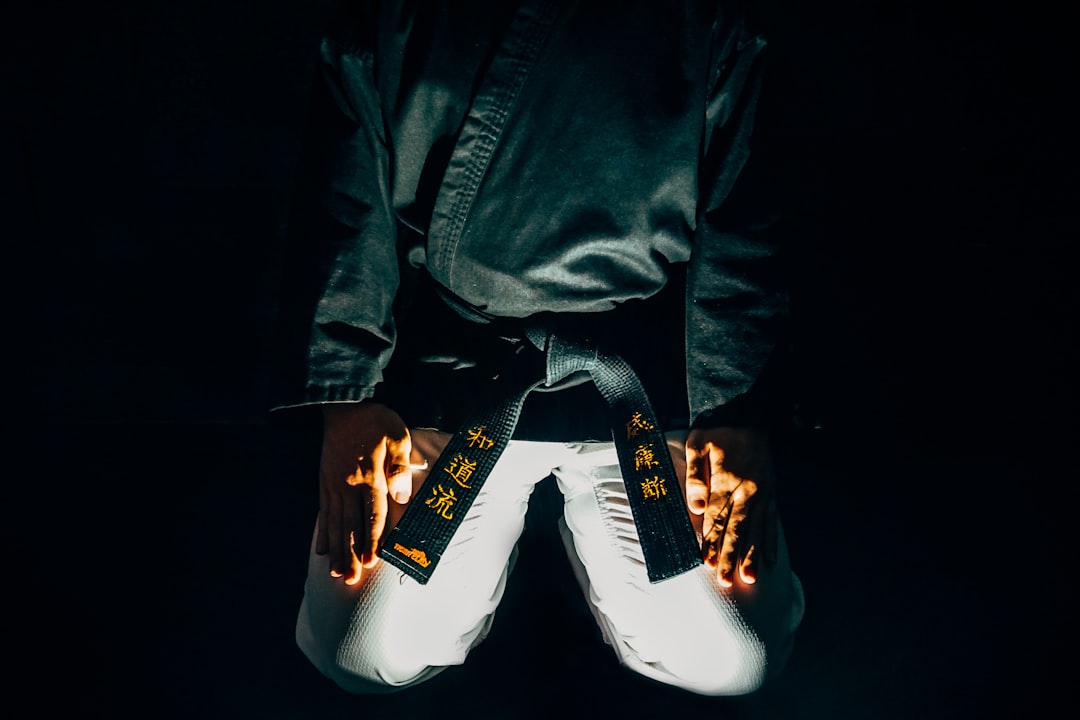Martial arts uniforms, particularly the karate gi, are central to the practice, symbolizing discipline and respect within the martial arts community. The traditional karate gi, typically made from cotton or hemp, is designed for both practicality and cultural significance, offering mobility and visibility for safe training while representing the values of purity and self-improvement. The uniform's components—a top with long sleeves, straight-legged trousers, and an optional headband—are all crafted to honor the tradition of karate, with the obi belt indicating a practitioner's rank through its colors, which denote different skill levels. These uniforms are made from materials chosen for their durability, comfort, and breathability, ensuring that martial artists can train effectively without hindrance, thereby facilitating both physical and mental preparation for the art of karate.
Explore the timeless tradition of martial arts uniforms, with a focus on the quintessential karate gi. This article sheds light on the essential attributes and historical significance behind these garments, offering insights into their components and characteristics that set them apart in the realm of traditional Karate attire. Delve into the world of martial arts uniforms and understand why they are more than mere garb—they are a symbol of respect, discipline, and heritage for practitioners worldwide.
- Understanding the Essentials of Martial Arts Uniforms: The Significance of a Karate Gi
- Components and Characteristics of Traditional Karate Uniforms
Understanding the Essentials of Martial Arts Uniforms: The Significance of a Karate Gi

When delving into the realm of martial arts, one encounters a variety of uniforms, each serving as a canvas for discipline and respect within their respective practices. Among these, the karate gi stands out as a quintessential element in the world of martial arts uniforms. What distinguishes the karate gi from other martial arts attire? Essentially, it is a garment designed with both functionality and tradition in mind. Constructed of cotton or hemp fabric, the gi facilitates ease of movement while allowing practitioners to remain aware of their opponents’ movements through the loose fit. Are the colors and styles of the karate gi significant? Indeed, they are. The traditional karate gi typically features a white jacket and trousers, symbolizing purity and neutrality, aligning with the martial arts philosophy of self-improvement over competition. This attire not only prepares the body for rigorous training but also the mind for mental discipline and focus.
Components and Characteristics of Traditional Karate Uniforms

Traditional karate uniforms, often referred to as martial arts uniforms, are designed for functionality and modesty during practice and competition. These garments have a rich history rooted in the discipline and tradition of karate. A classic karate uniform typically consists of a jacket, trousers, a belt, and sometimes a headband to keep hair out of the face. The jacket, or “gi” top, is usually made of cotton or a similar breathable fabric, allowing for ease of movement while absorbing perspiration during rigorous training sessions. It features a simple design with long sleeves, a button placket, and may include a waistband for additional support. The trousers, which match the jacket in color, are straight-legged and fasten around the waist with ties or buttons, providing comfort and ease of motion while performing various karate kata or techniques.
The belt, known as an “obi,” is a wide sash that not only holds the waistband of the trousers but also serves as an indicator of the wearer’s rank within the martial arts community. Each color represents different levels of skill and mastery. Headbands, traditionally white, are optional but help to keep sweat out of the eyes and ensure that the practitioner’s focus remains clear, both physically and mentally. These components of traditional karate uniforms emphasize the importance of simplicity, practicality, and respect for the martial arts discipline. Are the materials of a karate uniform chosen specifically for their ability to withstand the physical demands of the practice? Yes, the materials are carefully selected for their durability, comfort, and breathability, ensuring that practitioners can train without unnecessary distractions or discomfort.
Martial arts enthusiasts often inquire about the attire that defines their practice, and a key element is the karate uniform, commonly known as a gi. This article has delved into the significance of these garments within the realm of martial arts training, highlighting their traditional components and characteristics. A karate gi serves not only as a functional piece of training attire but also as a symbol of respect and discipline in the martial arts community. Understanding the essentials of martial arts uniforms is crucial for anyone embarking on this journey, ensuring they are well-equipped, both physically and spiritually. As you continue your martial arts endeavors, remember that the uniform you wear is a reflection of your commitment to the art.
